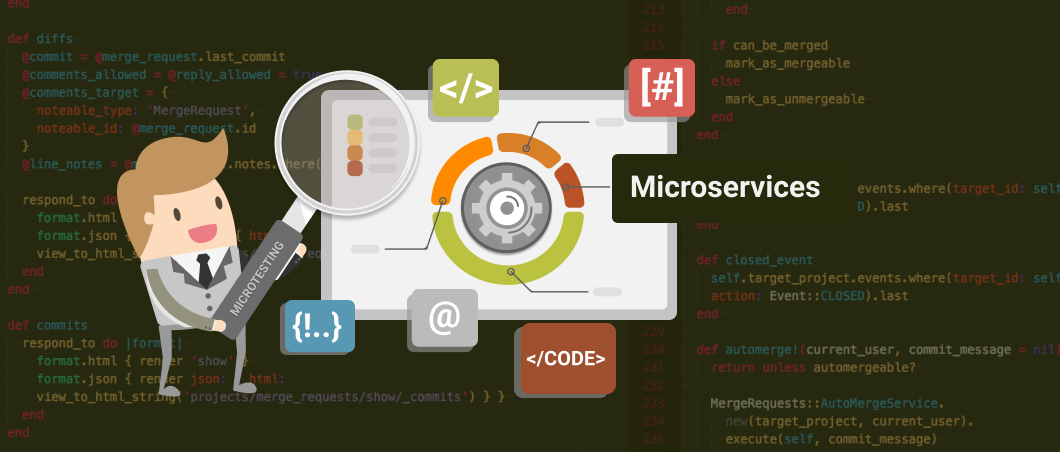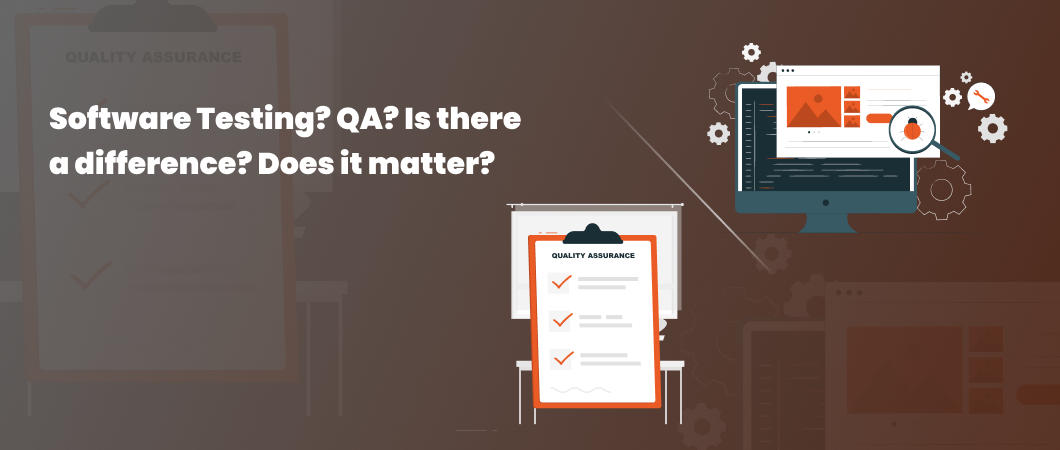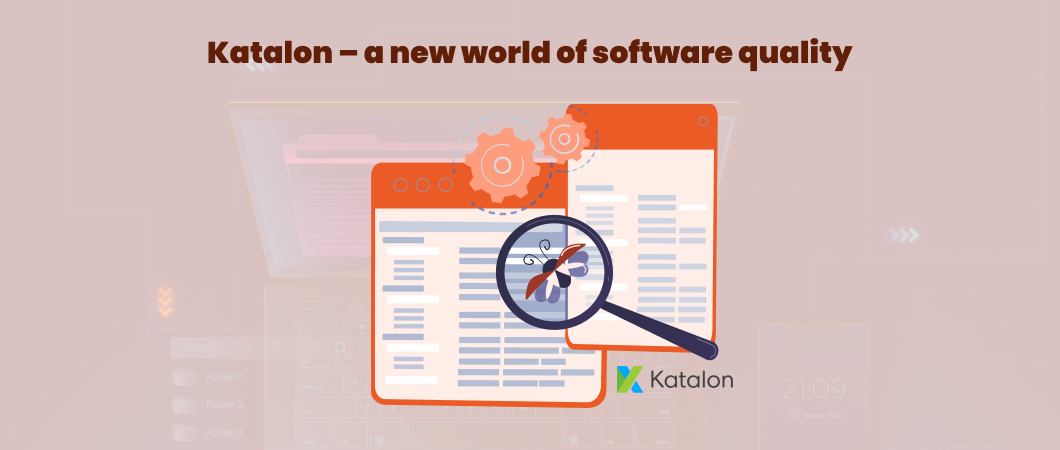You’re probably hearing a lot about microservices. Being a collection of small, extremely focused services that constitute an entire application or task, each instance of a microservice represents a single responsibility within the application. This is unlike traditional applications that are tightly coupled, and where the instances are highly dependent on each other. There, any change requires developers to completely re-build and re-deploy the whole application.
Turning to software testing, since microservices components are independent of each other, it makes testing and deploying them a piece of cake. However, the growing interest in and adoption of microservices also brings forth many challenges, specifically with respect to testing. So, what makes testing microservices so challenging, and what role does test automation play? Let’s find out!
Challenge of Testing Microservices
Testing microservices poses unique challenges due to the complexity and independence of numerous small services within an application. As organizations transition from monolithic architectures to microservices-based structures, the intricacies of testing multiply.
- Increased Complexity: The transition from a monolithic to a microservices architecture generates a massive number of tiny services, increasing the software’s complexity and making it harder to test.
- Resource Allocation: Prioritizing resource allocation becomes challenging, as testers must balance resources across teams responsible for different functionalities without overcommitting to less critical areas.
- Thorough Knowledge Required: Effective testing necessitates an in-depth understanding of each service, making the process of writing test cases and analyzing logs across multiple services more time-consuming and difficult.
- Architectural Redesign: Redesigning applications for microservices architecture is particularly challenging for large and complex systems, adding to the complexity of defining a testing strategy.
- Maintenance Hassles: Despite the flexibility of using different programming languages, developers must manage multiple libraries and database versions, complicating maintenance.
- Diverse Development Approaches: Different teams may implement similar features in various languages, leading to inconsistencies and additional testing challenges.
- Collaboration Difficulties: The independence of numerous teams can hinder collaboration, making it hard to maintain consistent communication and stay aligned without modern communication interfaces.
- Coordination of Development: Coordinating the overall development becomes a challenge as multiple teams work simultaneously on different functionalities, requiring robust integration and testing efforts to ensure seamless operation.
Role of Test Automation in Microservices Architecture
Test automation plays a crucial role in the efficient testing and deployment of microservices-based applications. Due to the independent nature of microservices components, test automation provides numerous benefits, ensuring seamless integration and functionality within the larger application ecosystem. Here are key aspects of how test automation supports microservices:
- Independently Deployable and Testable: Microservices components are independently deployable, allowing for isolated testing and seamless integration with the application ecosystem.
- Comprehensive Testing Strategy: Effective testing strategies require the right tools, technologies, and frameworks to thoroughly test every layer of microservices.
- Unit Testing: Unit testing is integral to microservices, and automation helps handle the large volume of unit tests by observing module interactions and state changes.
- API and Interface Testing: Test automation checks APIs, interfaces, communication paths, and service components, ensuring independence in the internal implementation of services.
- Immediate Feedback and Breakage Identification: By verifying communication paths and service components, developers receive immediate feedback and can quickly identify and resolve breakages.
- Contract Testing Automation drives better contract testing, ensuring that input and output of various modules meet the agreed contract expectations.
- End-to-End Testing: Test automation enables efficient end-to-end testing, verifying that all units within the microservices architecture function as intended and meet system requirements.
- Gap Identification and System Correctness: It helps identify gaps between services, assess system correctness, and ensure the proper functioning of the entire system.
Deliver superior products
Microservices facilitates faster, more flexible, and resilient software development through decoupled, independent services that are easier to manage and deploy. In a microservices world, testing is extremely crucial. The aim is to react quickly to changes in the production environment and to ensure high quality of software product – much before users even realize there’s an issue. Given that a microservices-based architecture creates fluid, shifting relationships, test automation ensures the interfaces, databases, third-party, as well as internal sources, work seamlessly with each another. Test Automation helps simplify the testing process, enabling testers to test each component with greater precision. This ensures a thoroughly tested and superior microservices-based product with impactful functionality.
FAQ
Why is test automation important in microservices?
Test automation is crucial in microservices due to the complex and distributed nature of these architectures. Manual testing can be time-consuming and error-prone, especially when dealing with numerous services and their interactions. Automation ensures consistent and repeatable tests, which helps in maintaining high-quality software. It also speeds up the development process by providing quick feedback, enabling continuous integration and continuous delivery (CI/CD) practices.
What are the common types of tests used in microservices automation?
In microservices automation, common types of tests include unit tests, which focus on individual components; integration tests, which verify the interactions between services; contract tests, which ensure that services adhere to agreed-upon interfaces; end-to-end tests, which validate the entire workflow from start to finish; and performance tests, which assess the system’s responsiveness and stability under load.
How does service virtualization benefit test automation in microservices?
Service virtualization allows testers to simulate the behavior of dependent services that are not yet developed, are unavailable, or are costly to use. This is particularly beneficial in a microservices environment where services are highly interdependent. By using virtual services, testers can create reliable and repeatable test environments, leading to more efficient and effective testing processes.
What role does continuous integration play in test automation for microservices?
Continuous integration (CI) plays a critical role in test automation for microservices by automatically integrating and testing code changes as they are made. CI systems run automated tests on each code commit, ensuring that new changes do not break existing functionality. This practice helps in early detection of defects, facilitates rapid feedback, and supports the agile development of microservices by promoting a culture of frequent and reliable releases.
Can performance testing be automated in microservices?
Yes, performance testing can be automated in microservices. Automated performance tests involve simulating load on the system to assess its responsiveness, throughput, and stability under different conditions. Tools like JMeter, Gatling, and Locust can be used to create and run these tests, providing valuable insights into potential bottlenecks and scalability issues. Automated performance testing helps ensure that the microservices can handle real-world usage scenarios effectively.



